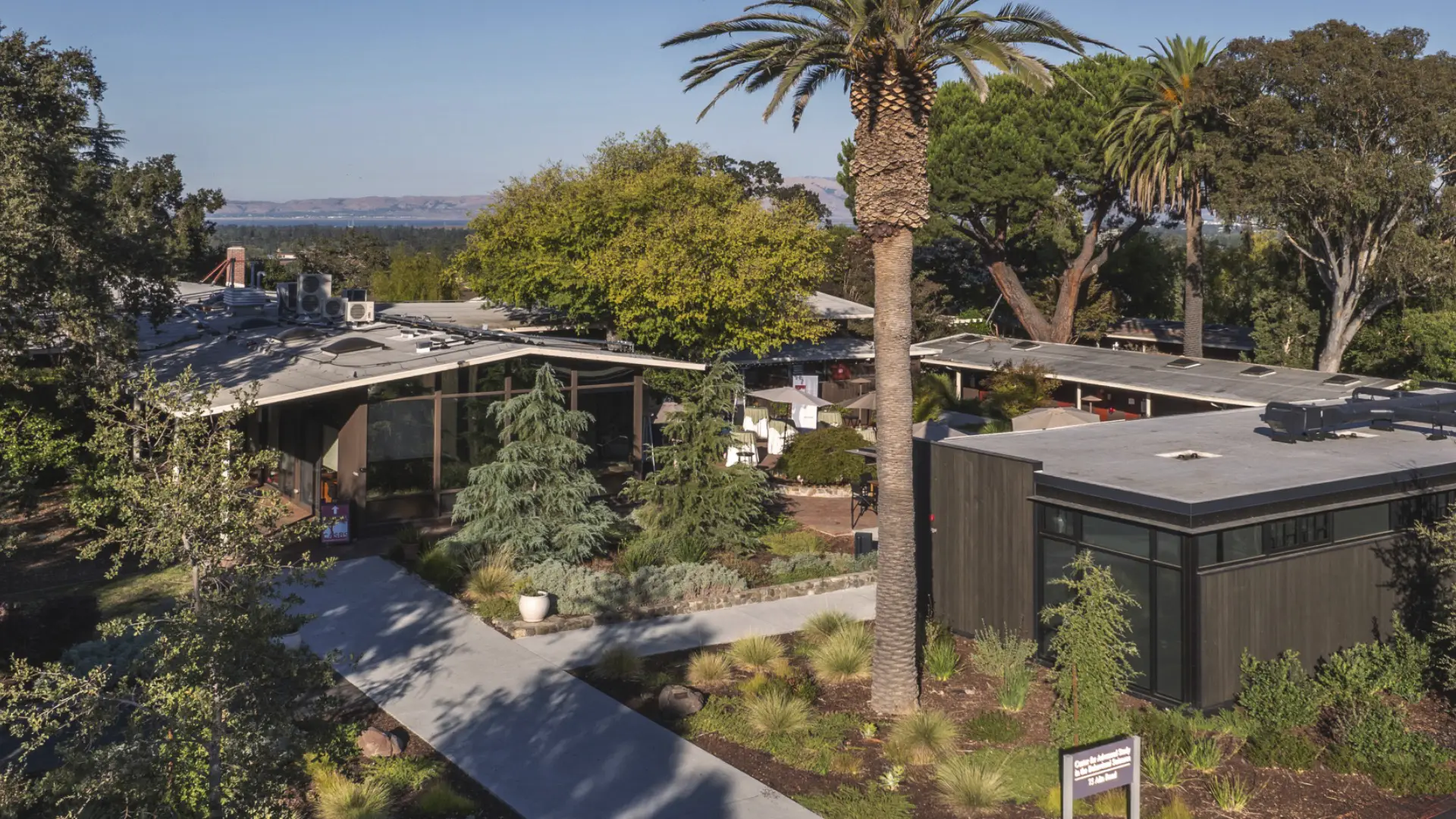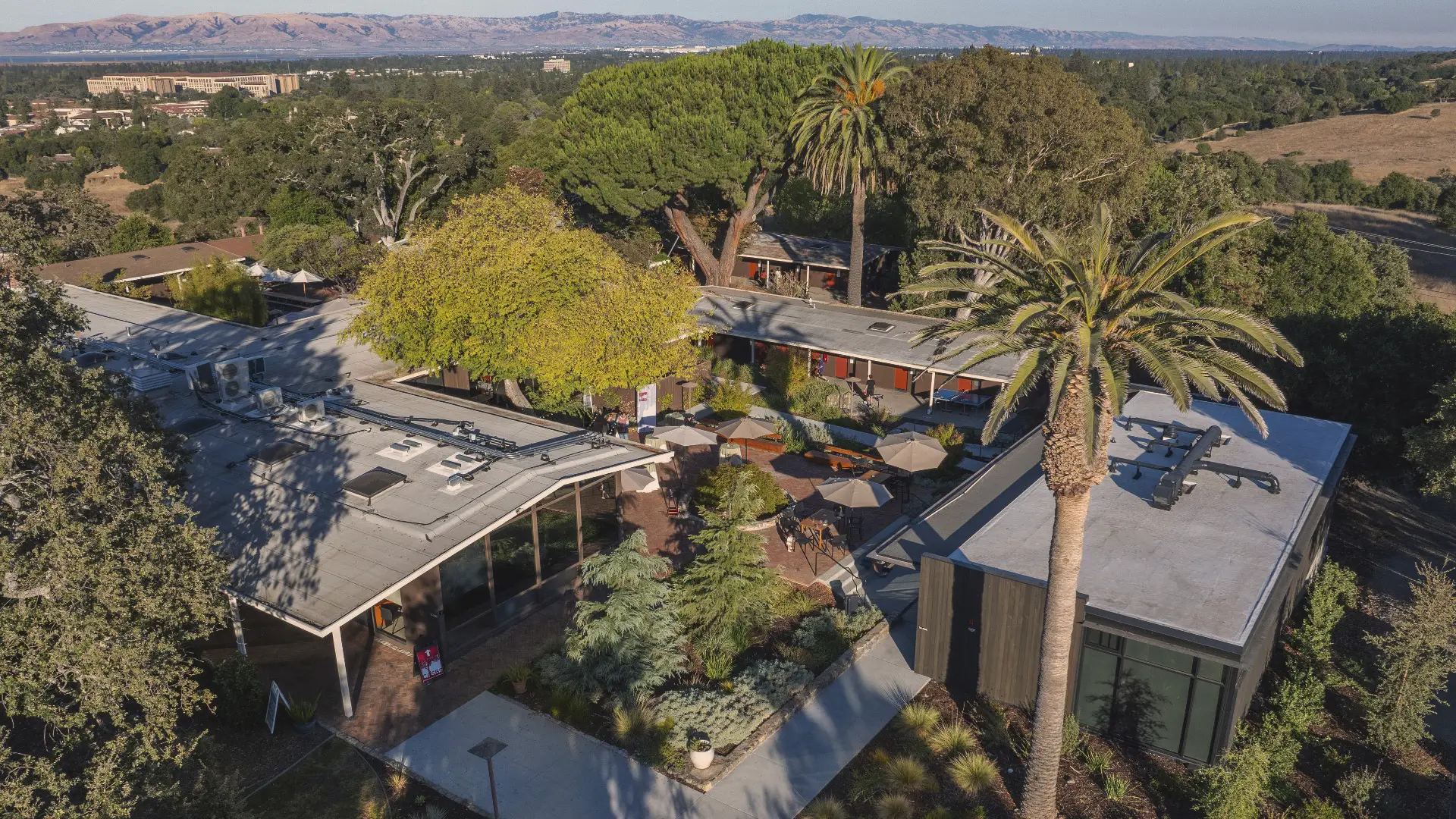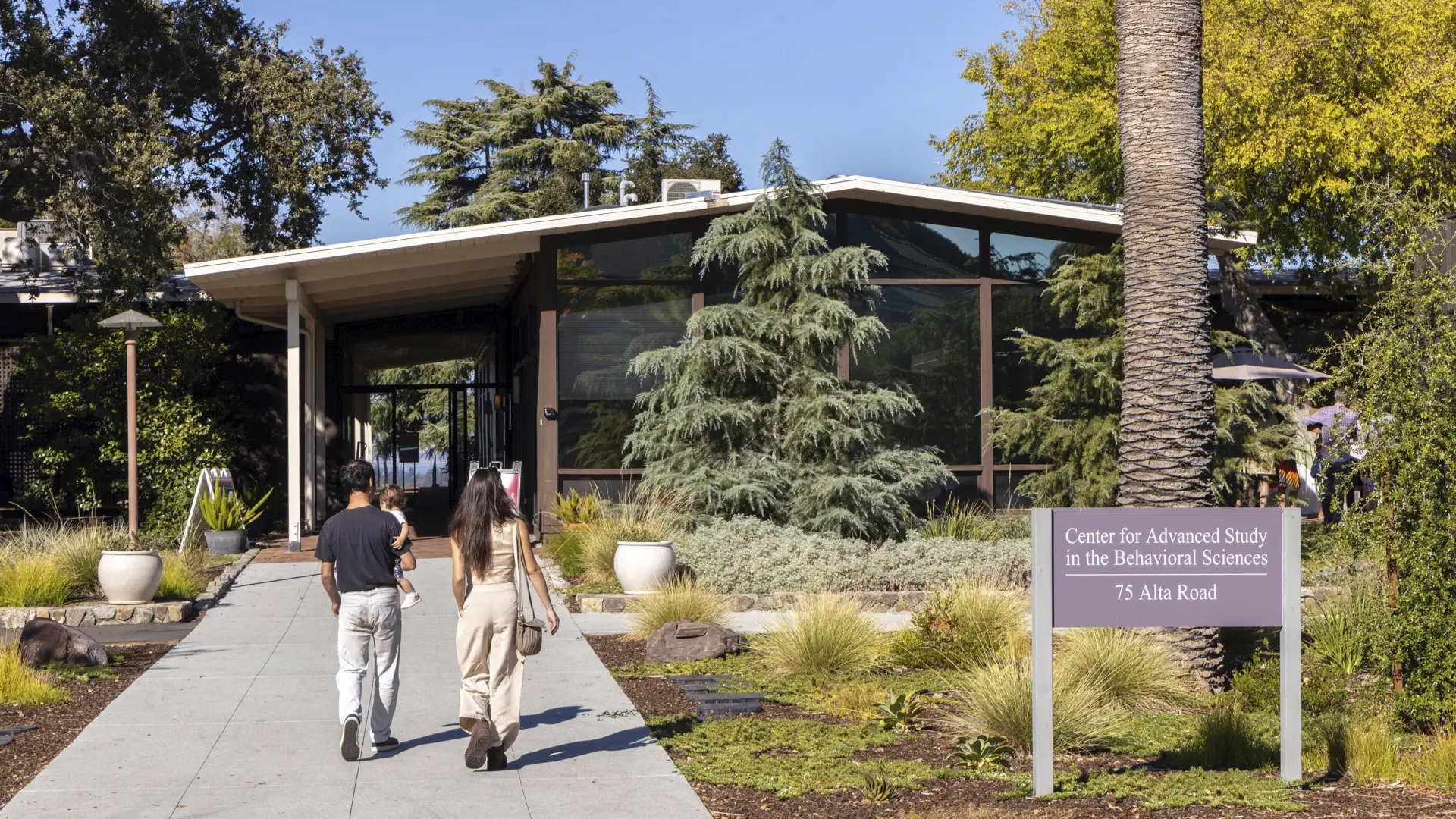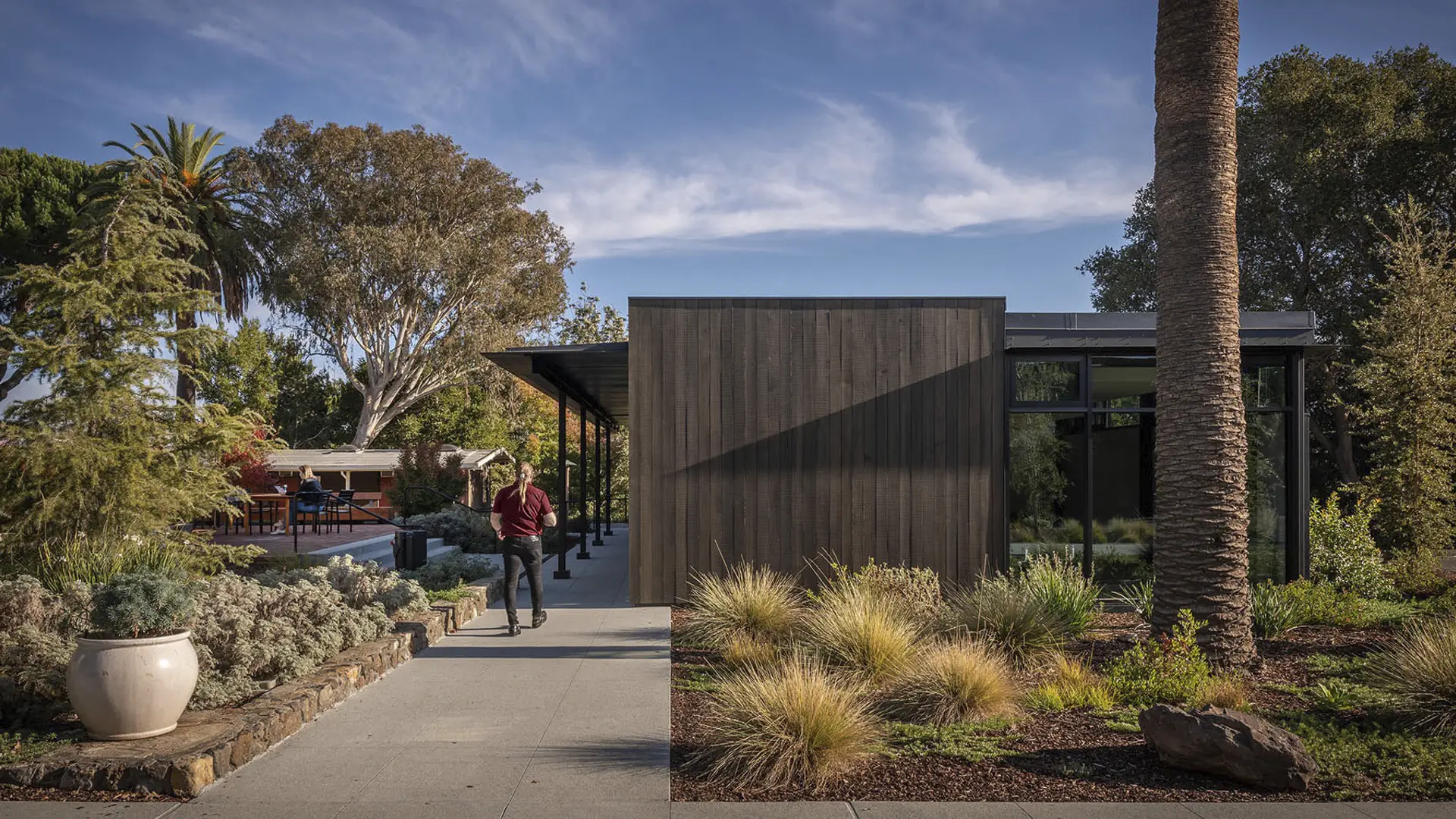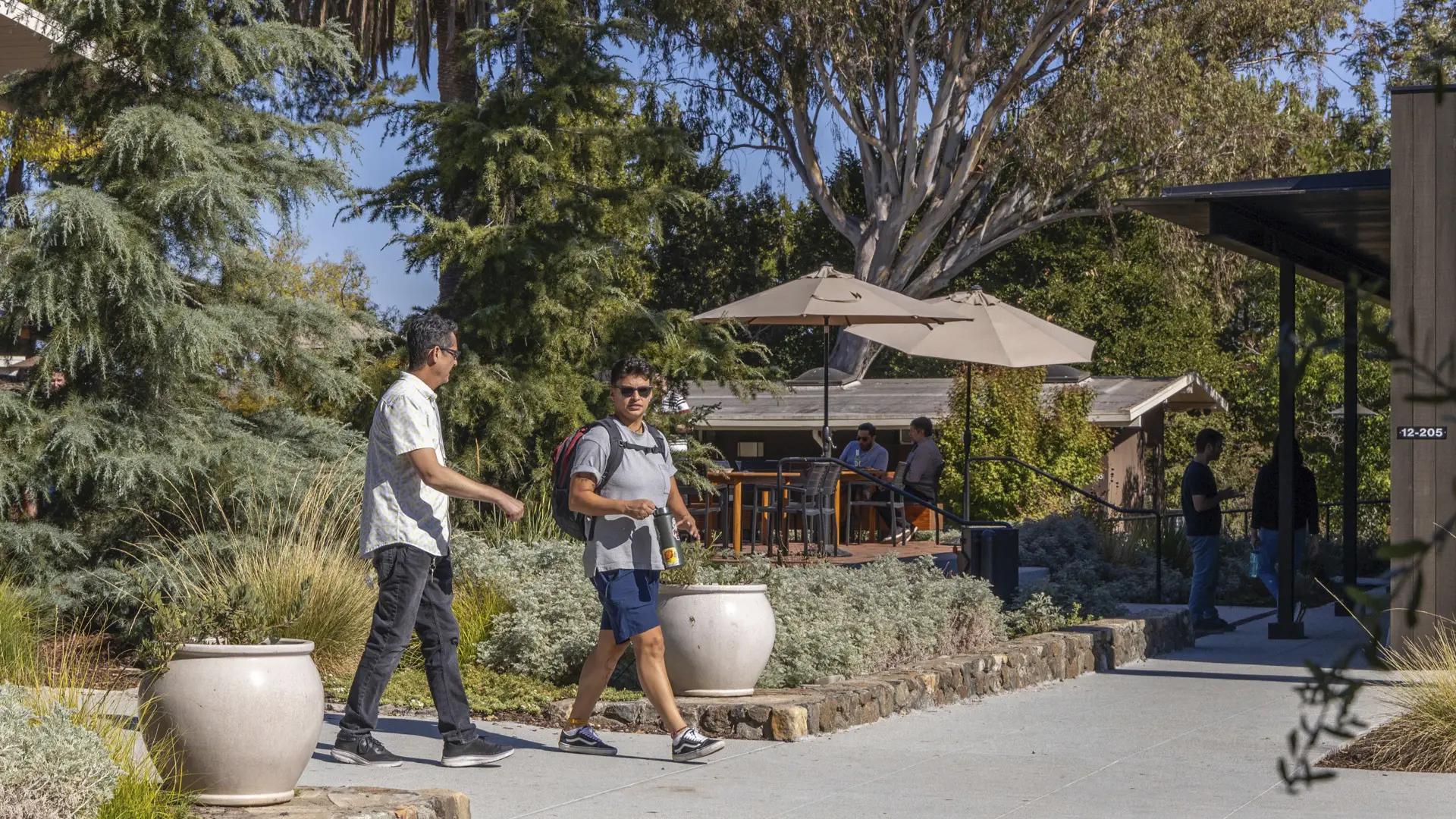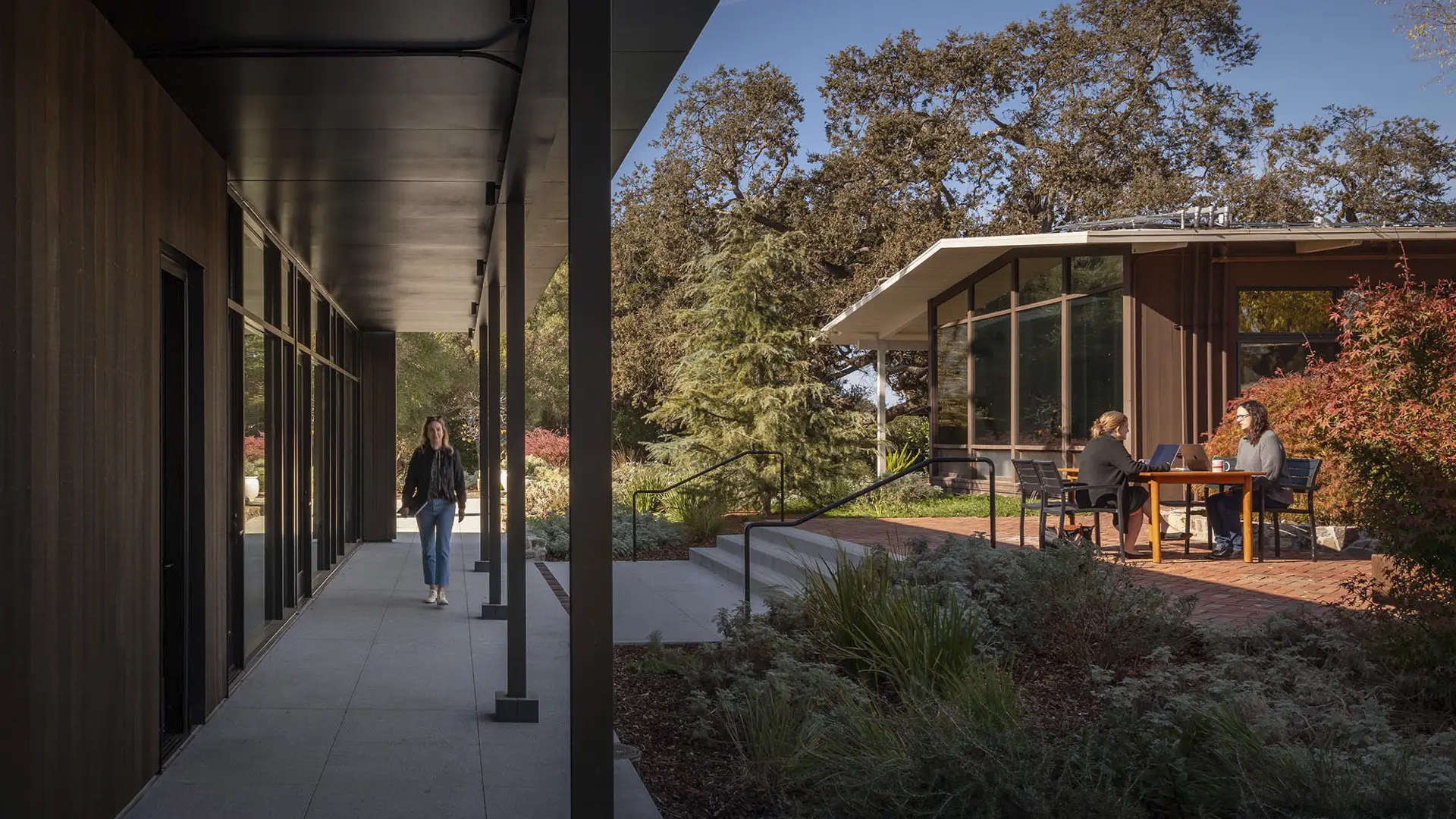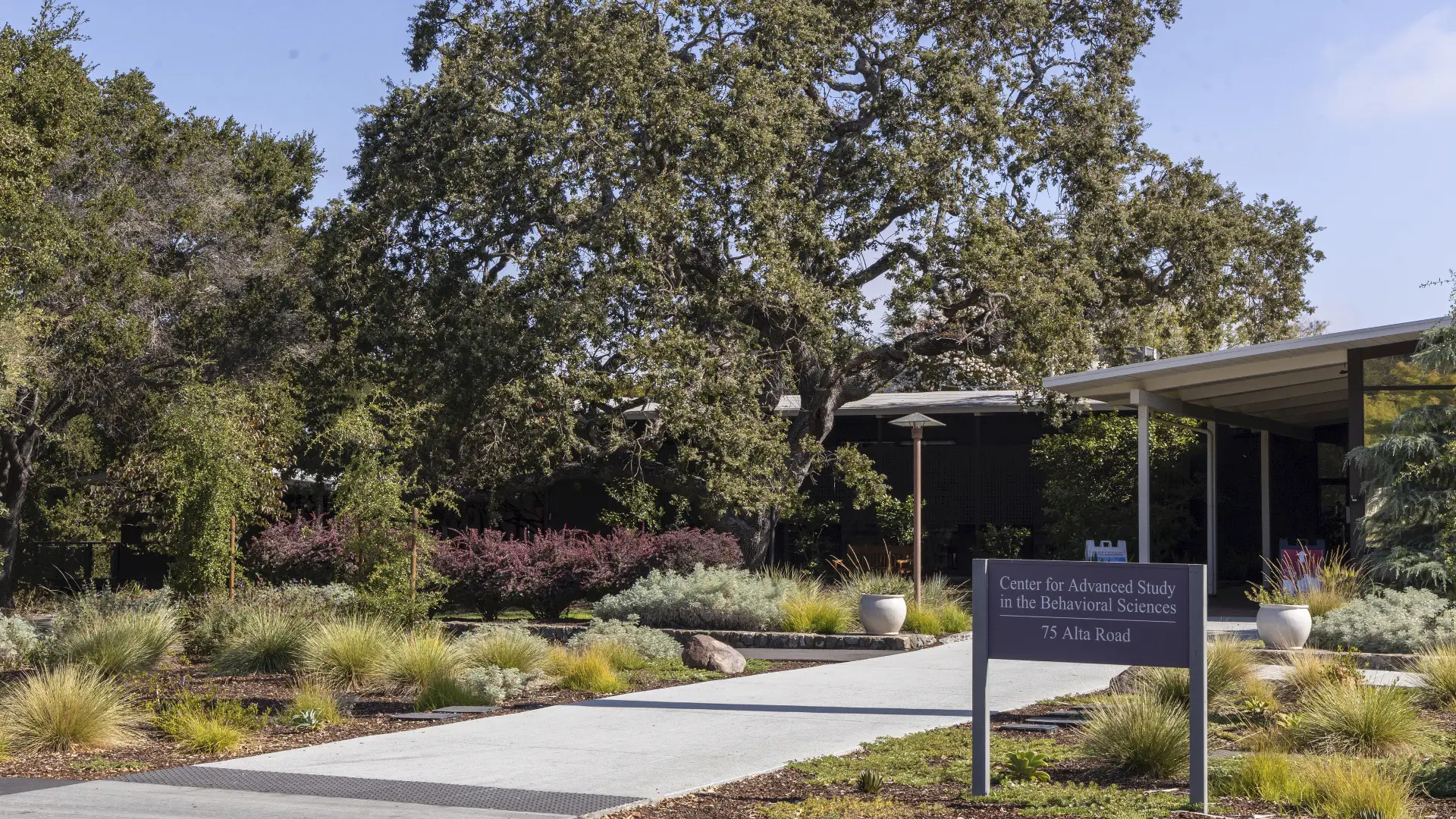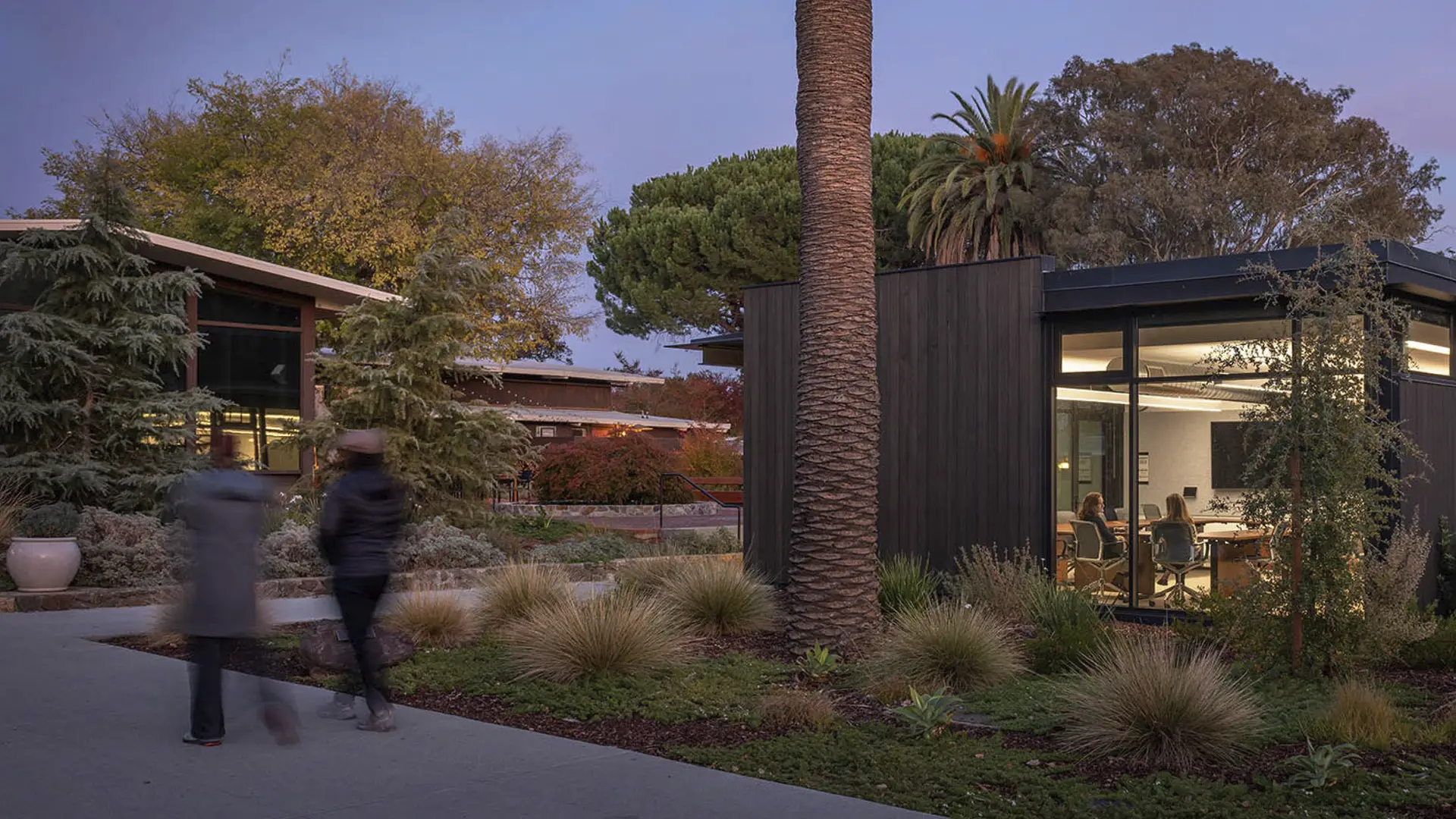Sitting atop a hill above Stanford University’s campus, the Center for Advanced Study in Behavioral Sciences (CASBS) has long been a destination for groundbreaking thinkers, with 30 Nobel Prize winners, 25 Pulitzer Prize winners, 52 MacArthur Fellows, and 176 members of the National Academy of Sciences among the esteemed class of Fellows. Situated between the campus’ well-known Stanford Dish and undeveloped pastures, CASBS occupies a unique place at the wildland-urban interface, functioning as a campus within a campus—an enclave for innovation.
To shape the next chapter of this legacy, SWA collaborated with Olson Kundig to revitalize CASBS’s mid-century modern setting, honor Thomas Church’s original landscape design, and enhance the facility to inspire collaboration.
Olson Kundig introduced the first new building to the campus since its founding in 1954. Strategically positioned, the new administration building frames a central courtyard, transforming what was once paved asphalt into an inviting social hub. Oriented for optimal sunlight, the courtyard is marked by prominent existing trees to enhance their presence. The trees are complemented by a series of stone retaining walls, referencing the feature often used in Church’s designs to navigate grade changes across the site and improve the connection between gathering spaces.
With no original records of Church’s design to reference, SWA drew from a portfolio of nearly 300 Stanford projects and studied Church’s broader portfolio to develop a list of signature plantings appropriate for the historic campus. The selected tree palette was expanded using a wider range of more adaptable and climate-resilient oak species, creating the next generation of oak canopy shading the complex.
The completed courtyard establishes a welcoming entrance to the CASBS campus. It also serves as a development tool, leveraging the majestic California landscape to create an atmosphere that invites engagement and events that spark new ideas. As the first major update to the CASBS campus in 60 years, the collaboration building and courtyard enhance the campus experience, honoring the Fellows of the past while inspiring those of the future for decades to come.
Miwok Aquatic and Fitness Center
Nestled in Novato’s rolling Oak woodlands, the College of Marin’s Miwok Aquatic and Fitness Center provides Northern California with a new destination for aquatic training and competitions. Part of the College’s Indian Valley Campus, the center neighbors over 1,400 acres of open space preserves. ELS and SWA worked closely to lay out the site ...
Northwest Vista College
Northwest Vista College is situated in the oak covered hills west of San Antonio, with beautiful views toward the city and surrounding valley. Previously the design team completed an extensive master plan that accommodated for the expansion of the college facilities to three times its current size. The design seeks to sensitively integrate the nearly 400,000 s...
CyFair College
The CyFair College Campus is a model for environmentally responsible development and restoration of a sensitive ecosystem. Located on the suburban fringe of northwest Houston, it is surrounded by the Katy Prairie, an endangered ecosystem of coastal prairie grass meadows marked by groves of trees and connected to a system of wetlands, bayous, and ponds.
...
Montclair State University Student Center and Quad
SWA/Balsley collaborated with DIG Architects and Montclair State University to reimagine the campus student center,...



